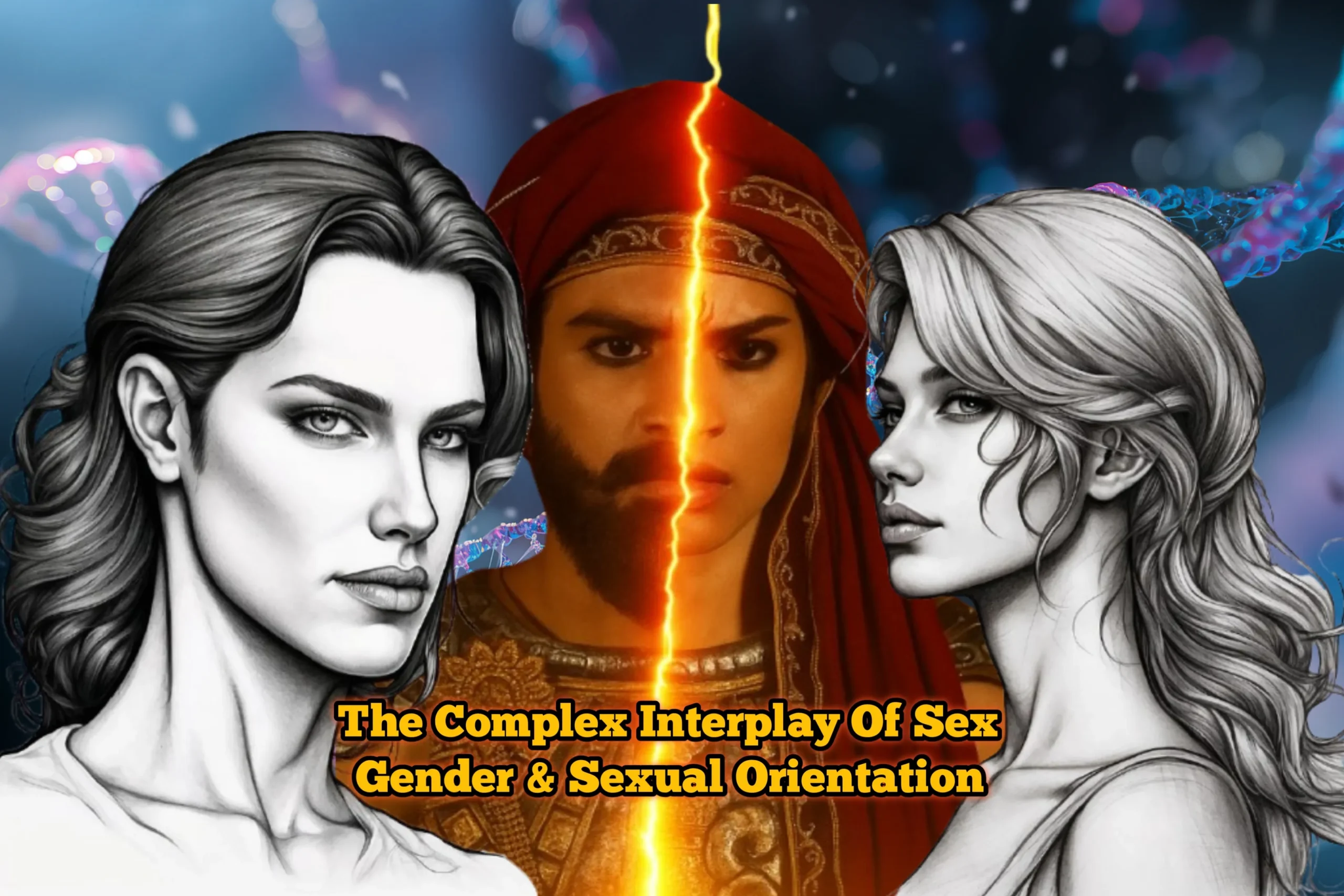Sex, gender, and sexual orientation are closely related to how the brain works. Although sex, gender, and sexual orientation are three separate things, they are not a package deal. How are they related to how the brain works?
At the beginning of human embryonic development, we are talking about humans here, not animals, right? In human embryology, the first organ to form or develop is the brain, or the precursor to the brain. Sixteen days after the sperm and egg meet and implantation occurs, the precursor to the brain, called the neural plate, forms on the 16th day. In the third week, the neural plate begins to fold into the neural fold. It then becomes complete as the neural tube in the fifth week. In the eighth week, sexual differentiation occurs.

Why is that? Because all humans are female at first. So, until the fetus is 8 weeks old in the womb, all humans are female. In the eighth week, a series of events occur that change some females into males. The rest remain female. What happens? In the eighth week, the SRY gene in the Y chromosome begins to activate. Humans have 23 pairs of chromosomes, and one pair is the sex chromosomes: X and Y. The Y chromosome interferes, causing some female fetuses to become male.
What is rather unique is that, I am sure that even now, in high schools in Indonesia, it is taught that the XX gene or chromosome is female and XY is male. But that should not be the case. Not all XX are female, not all XY are male. Why? The presence of the Y chromosome, which contains the SRY gene, is what changes some of the female fetuses into males.
How does it work? The SRY gene triggers two processes. The first is masculinization. This gene expresses masculine traits. Strong muscles, a future mustache, and a sturdy body are signs or traits of masculinity. Actually, all humans carry these traits, even women. Women also have masculine traits in their genes, but they are not expressed. The SRY gene in the Y chromosome attracts masculine traits to emerge. This is called masculinization.
The second process is defeminization, where feminine traits are reduced until they disappear. So there are two changes that occur: the first is masculinization and the second is defeminization. These changes do not occur uniformly in all human fetuses. This explains why there are more effeminate men than masculine women. Yes, because initially they were all female. It is only because of interference from the Y chromosome that some human fetuses become male.
The sequence is that a neural impulse occurs. The trigger actually comes from the brain itself, when the fetus is still in the form of a neural tube. The neural impulse activates sex hormones that enable the two processes mentioned above, masculinization and defeminization. This is what causes some female fetuses to become male due to the presence of the Y chromosome. So, basically, males are females with the wrong hormones. Their male hormones are brought in and expressed by the Y chromosome. So if there are men who act like women, waving their arms around like women, it’s because they “want” to return to their natural state. Right?
Because when the human fetus develops into a male, there are still many problems to face. Women are designed to be much stronger than men. Women’s endurance is far greater than that of men. Why does it seem that men are stronger now? It’s just an impression. Because culture considers men to be strong, women to be weaker. In Indonesia, where the majority of the population is Muslim, everyone surely knows this verse from the Quran:
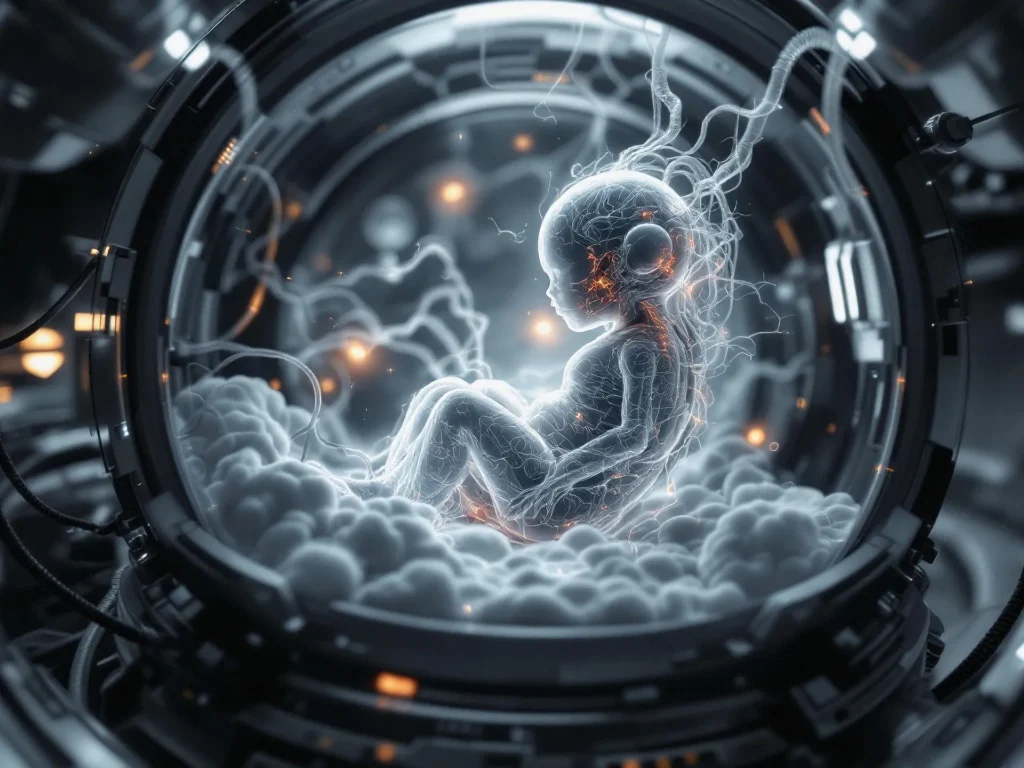
An-Nisa Ayat 34
ٱلرِّجَالُ قَوَّٰمُونَ عَلَى ٱلنِّسَآءِ بِمَا فَضَّلَ ٱللَّهُ بَعْضَهُمْ عَلَىٰ بَعْضٍ وَبِمَآ أَنفَقُوا۟ مِنْ أَمْوَٰلِهِمْ ۚ فَٱلصَّٰلِحَٰتُ قَٰنِتَٰتٌ حَٰفِظَٰتٌ لِّلْغَيْبِ بِمَا حَفِظَ ٱللَّهُ ۚ وَٱلَّٰتِى تَخَافُونَ نُشُوزَهُنَّ فَعِظُوهُنَّ وَٱهْجُرُوهُنَّ فِى ٱلْمَضَاجِعِ وَٱضْرِبُوهُنَّ ۖ فَإِنْ أَطَعْنَكُمْ فَلَا تَبْغُوا۟ عَلَيْهِنَّ سَبِيلًا ۗ إِنَّ ٱللَّهَ كَانَ عَلِيًّا كَبِيرًا
Meaning: “Men are the leaders of women, because Allah has made some of them (men) superior to others (women), and because they (men) spend some of their wealth. Therefore, righteous women are those who are obedient to Allah and guard themselves when their husbands are absent, because Allah has guarded them. As for those women whose disobedience you fear, then advise them, and separate them in their beds, and beat them. Then if they obey you, do not seek ways to harm them. Indeed, Allah is Exalted and Great.”
This is indeed a teaching of Islam and has become part of the culture because they obey and practice their religious teachings from generation to generation. It seems as if men are stronger, but this is an assumption that arose in the culture. Why? Because in the past, the risk of death for women was much higher than that of childbirth. In history, women often died during childbirth. This created the impression that women were prone to death. And eventually, men were perceived as superman.
Nowadays, childbirth is so easy and safe for women, like popping a pimple on your face. Are there people who die during childbirth now? Some people die while popping pimples too. They get so absorbed in popping pimples that they get hit by a car. Yes, it happens. But in general, childbirth in this day and age is not a problem. And now that the medical process of childbirth is safe for women, women’s life expectancy is much higher than men’s. The average life expectancy for men is currently 70.6 years, while the life expectancy for women is 75.9 years, according to global data for 2023/2024.
Women of childbearing age are not susceptible to heart attacks. This is because the hormonal changes that occur every month are regulated through the menstrual cycle, which keeps women’s blood vessels very healthy. However, once women reach menopause, their risk of heart attack becomes the same as that of men.
Gender is not limited to just two categories, male and female. There are many in between. Remember, not all XXs are female, and not all XYs are male. There are XX males and XY females. How can we tell? Anatomically, males have a penis and testicles. But what if the testicles have a slit similar to a vagina? Is that person female or male? Or, for example, if the penis is very small, like a large clitoris, is that person female or male? So, in fact, gender is not a dichotomy. Gender is a spectrum between the male pole and the female pole.
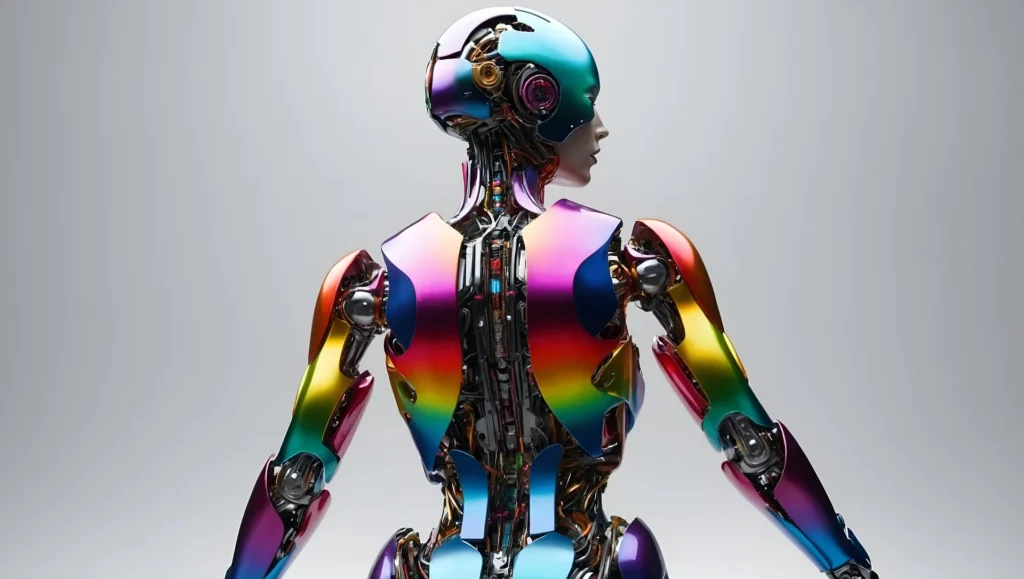
What about gender? In the eighth week, the SRY gene in the Y chromosome is activated, causing differentiation. There is a flood of testosterone in the fetal brain, which is still in the form of a neural tube. This flood or immersion in testosterone during the growth and development of the fetal brain after 8 weeks until 40 weeks of age causes the brain to become completely different compared to if there had been no testosterone immersion. As a result, babies who later become male have a very different brain structure, function, and way of working than female fetuses who remain female. And that makes each brain have a different concept of self-identity.
Similarly, human gender is not a dichotomy between masculine and feminine, but a spectrum. Why? Because what happens are two things: masculinization and defeminization. These two things do not always go hand in hand and occur together in humans. No. Therefore, not all males have a masculine gender. The same applies to females. Why? Because their brains function differently. Why? Because their brain development during fetal growth is different. Because the processes of masculinization and defeminization are not uniform.
It is true that some human fetuses are exposed to testosterone, but the exposure is not always extreme. The change is slight or non-existent. This explains why some males are feminine. They have very delicate manners. They are girlish. This is what causes diversity or so many variations in gender among males and females.
When babies are born, they enter a period of infantile puberty. So, the first puberty occurs three months after birth. Why? Boys experience a second surge of testosterone after birth. Meanwhile, girls experience a surge of estrogen for 24 months. This widens the gender gap between boys and girls. Generally speaking. But again, because the processes of masculinization and defeminization do not occur uniformly, not all male babies have masculine gender traits. Not all female babies have feminine gender traits either. Therefore, as they enter adolescence, each individual’s gender becomes increasingly clear. And there is absolutely no direct correlation between sex and gender.
The same applies to sexual orientation. Sexual orientation also occurs because the emotional centers in the human brain drive sexual orientation. Sexual orientation is sexual attraction. It directs our sexual activity. There is a difference between sexual activity and sex. Sexual organs are obvious, for example, the penis and testicles in males, and the ovaries, uterus, and so on in females. These are sexual organs.

Meanwhile, the sexual organ is the human brain. Only a small portion of human sexual activity is for reproduction. The majority is for recreation.
So, during the eighth week of human fetal development in the womb, the testosterone immersion that occurs in the brain is necessary to change female structures, such as the ovaries and uterus. With this testosterone immersion, the ovaries then turn into testicles. Then the testicles descend and are wrapped by the labia majora (in females), enveloping them into the scrotum. That is what happens to the sex organs.
The testosterone immersion in the brain also directs each individual’s sexual orientation. However, once again, the process of masculinization and defeminization is not uniform, making each person different, with different sexual orientations.
There are men who direct their sexual orientation toward women or women toward men. There are men who direct their sexual orientation towards men. There are women who direct their sexual orientation towards women. This is called homosexuality. But basically, humans are pansexual or omnissexual. Humans can direct their sexual orientation towards anyone or even anything. They can direct their sexual orientation towards bisexuality; some are horny for their VW cars, for example. Some people are horny for bridges. There are many stories like this, for example, one that was covered on the National Geographic Taboo show. So horny that there are people who stroke their Harley-Davidson motorcycles every day until they orgasm. Their sexual orientation is towards Harley-Davidsons. There are people who engage in sexual activity with goats in certain areas. This is not unusual in certain places. So basically, human sexual orientation is pansexual.
Why is that? Because the brain develops differently after masculinization and defeminization occur. Sex, gender, and sexual orientation are not a single package. There are men who have complete testicles, a complete penis, and a very muscular body, but some have a feminine gender. They are effeminate. And their sexual orientation is heterosexual; they are married, have children, and there are people like that. There are also very macho men who are homosexual or bisexual. They exist. So, these three variables (sex, gender, sexual orientation) can be combined with one another. And don’t forget, there are also asexual people. Why? Because their brains develop differently. Is that abnormal? No! All of that is just variation in life. Everyone depends on their own brain patterns, so they are born with different characteristics. That’s why each person has a different attitude because they are genetically different. There’s no need to force them to be the same.
Human sexual orientation is 100% beyond human control because it exists at a primitive level of the brain. It cannot be controlled by humans because it is a result of natural selection that has been going on for millions of years. For example, homosexuality does not only occur in humans. No. Bonobos, a species of dwarf ape, have a social system that is almost identical to that of humans. They are anti-war. Even if they fight over females, rather than conflict, they prefer homosexuality.
And the human brain’s system of morality is more similar to that of bonobos than chimpanzees. Even though genetically, humans are 99% identical to chimpanzees. There is not a single organ that humans have that chimpanzees do not have. There is not a single enzyme that chimpanzees have that humans do not have. Everything is exactly the same. The only difference is in their genome, which is only 1%. But that 1% produced Einstein, JS Bach, Beethoven. But that 1% also produced Osama Bin Laden, Hitler, Pol Pot. So don’t think that humans are more noble than them. Morality has nothing to do with sexual orientation. Morality is based on altruism. Not hurting others or, at the very least, not being able to bear seeing others suffer, showing empathy, and even wanting to help those in need (sympathy).
So it turns out that we, as humans, as a species, are not as simple as we think. And something intrigues me about gender, and how it is similar to ancient literature, which has presented this discourse in an epic called the Mahabharata. Yes, there is a topic about the gender identity of a person named Srikandi.
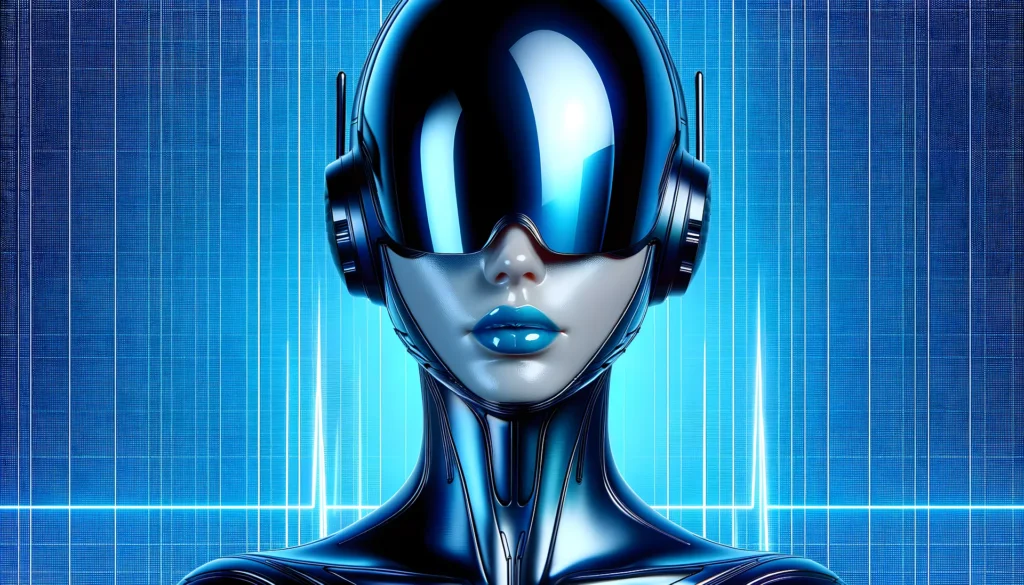
Of course, when talking about the Mahabharata, there are two versions that Indonesians are familiar with, namely the Javanese puppet version and the original version from India. I will not discuss the Javanese puppet version, because the characters are simpler. Srikandi is a powerful woman and one of Arjuna’s wives. That’s it.
What about the Indian version of Srikandi? Srikandi is the daughter of King Drupada of the Pancala kingdom. It is said that King Drupada and his queen longed for a child born directly from her womb. Even though they already had two children, both of them were born in an unnatural way through a process of worshiping the gods. Drestadyumna, Srikandi’s older brother, was born from the smoke of incense during worship. Meanwhile, Srikandi’s older sister and Pandawa’s wife, Drupadi, was created from the embers of incense.
After praying to the gods, the queen finally became pregnant and gave birth to a baby girl, who, according to the gods, would later transform into a boy. That baby girl was Srikandi. Although she was born with a female body and organs, King Drupada raised Srikandi as a boy. Perhaps the logic was simple: after all, the gods had said that Srikandi was a girl who would later become a boy. Does this remind you of something from the beginning of this article?
Here we can begin discussing the difference between sex and gender as a sense of self-identity. Finally, Srikandi, a woman who lived her life with a male identity, continued her life. The main problem clearly arose when King Drupada married Srikandi to a princess from the kingdom of Dasarna, Hiranyawati, the daughter of King Hiranyawarmandari. When the princess found out that her husband was actually a woman, the conflict between the kingdoms of Pancala and Dasarna heated up. Feeling ashamed, Srikandi finally fled to the forest and met a Yaksha or demon named Stuna. Stuna wanted to help Srikandi change her gender. In short, the Yaksha named Stuna became a woman, while Srikandi transformed into a man. And the gods’ words were fulfilled that day.
Did the complexity of Srikandi’s life and story end there? Of course not. Like other characters in the Mahabharata epic, Srikandi’s greatest role awaited her in the Kurukshetra war. She would become the central figure who broke the deadlock and turned the tide when she incapacitated the Son of Gangga, Bhisma. By changing her gender and transforming into a man, did Srikandi’s identity become clearer? Raised as a man, then finally becoming a man. Obviously, right? No. These things are her attributes. In her soul, her gender, and her sense of self, Srikandi remains a woman. Because in her previous life, Srikandi was Amba, who, out of revenge, once begged the gods to cause the death of Bhisma, son of Gangga.
On the ninth night of the Kurukshetra war. That night was the ninth night, not the beginning or the end, but precisely in the middle of the 18 days of the Kurukshetra war. The Pandavas and the Kauravas were at a stalemate regarding the direction of the war. Victory and defeat came alternately, and the root cause of this situation was Bhisma, who could not bear to defeat his Pandava grandchildren, nor was he willing to let his Kaurava grandchildren win. On the one hand, there was not a single knight on the Pandavas’ side who was able to defeat Bhisma, son of Gangga. Not even the Pandavas, Parasurama, or even the god of death, Yama, were able to defeat him. This was because Bhisma was the only person who had been given the gift of choosing the time of his own death.
As long as Grandfather Bhisma raises his weapon, no one will be able to defeat him, said the Pandavas. That means we must not let Bhisma raise his weapon, said Krishna. But Grandfather Bhisma will always raise his weapon against any knight he faces, said the Pandavas. What if he faces a woman? said Krishna. But a woman could not possibly be on the battlefield, let alone raise a weapon. That was when Krishna remembered Srikandi to face Bhisma and incapacitate him. Srikandi, in whose soul was Amba, a woman who would be the cause of Bhisma’s death and who had also been raised by her father as a male warrior.
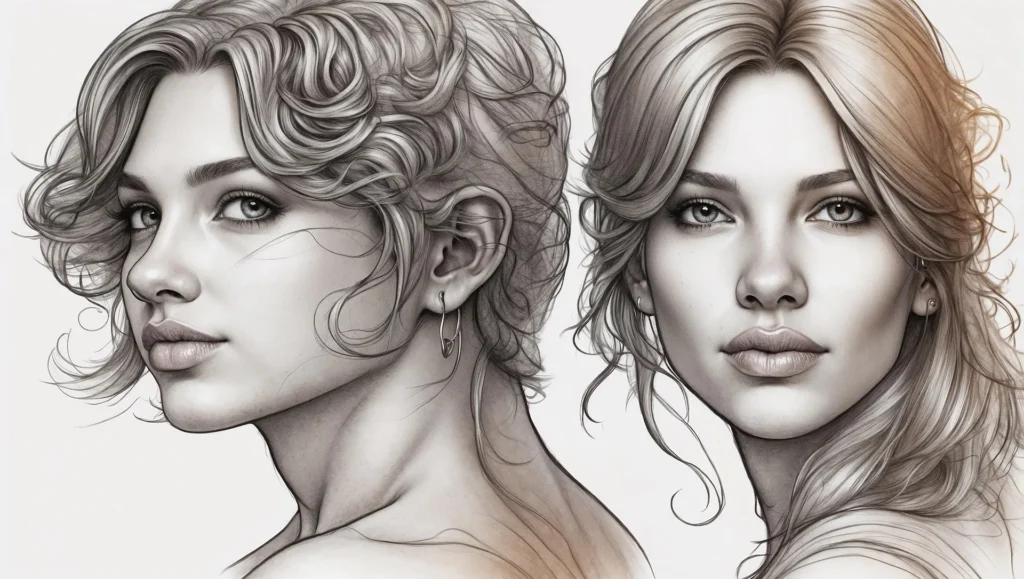
Srikandi is both a woman and a man. Or neither of the two. What is certain is that on the 10th day of the Kurukshetra war, accompanied by Arjuna, Srikandi was ready to face Bhisma and meet her karma. “Why have you brought this woman to face me?” said Bhisma when he saw Srikandi aiming her arrow at him. Calmly, Krishna replied, “Oh Bhisma, you see her as a woman because she was born as a woman and because you see Amba in her. As for me, I see her as a man because that is how her father raised her. And because she exchanged genders with a yaksa named Stuna. You see her as a woman who is unfit to fight you, while Srikandi sees herself as a man who wants to fight you.”
“I will not fight this woman,” said Bhisma as he laid down his weapon. On Krishna’s orders, Arjuna and Srikandi shot arrows at Bhisma’s body, who remained steadfast in his decision not to raise his weapon against Srikandi. Finally, Bhisma’s entire body was covered with hundreds of arrows from Arjuna and Srikandi, and Bhisma fell helplessly onto the bed of arrows, waiting to determine the time of his own death. By crippling Bhisma, Srikandi played an important role in breaking the deadlock, and the Pandavas became the victors of the war.
Let us analyze Srikandi’s character through the perspective of gender identity. Srikandi’s role in the Mahabharata epic, especially in the Kurukshetra war, was enormous. She succeeded in crippling one of Hastinapura’s greatest powers, Bhisma, son of Gangga. No one else was able to do this. But because of her great actions, we overlook other details that are also interesting to discuss. We are more interested in the premise of the story, a woman who succeeded in defeating the elder of Hastinapura, the mighty Bhisma, son of Gangga. And it is with this perspective that the Javanese puppet version of Srikandi “hijacks” Srikandi’s true identity.
That Srikandi is a woman, Arjuna’s wife, but she is a skilled warrior and powerful. A female hero. Perhaps in our patriarchal world, we need symbols to represent emancipation. However, if we are critical and try to see it from another perspective, if Srikandi was indeed a woman, she could not have been on the battlefield of Kurukshetra. Especially facing someone like Bhisma. The rules of war clearly did not allow for that.
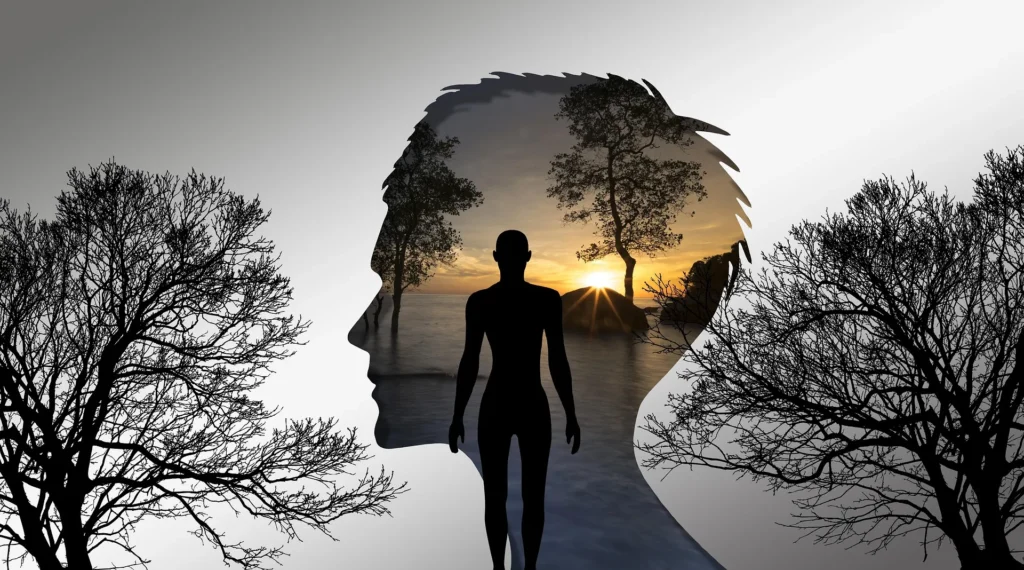
Srikandi was able to appear at Kurukshetra and defeat Bhisma because she was both a man and a woman. It depends on the perspective from which we view her. And who is viewing her. Krishna saw Srikandi as worthy of appearing at Kurukshetra because she had been raised by her father, King Drupada, as a man and eventually changed her gender with the yaksha Stuna as a man. Meanwhile, Bhisma saw Srikandi as a woman who was not worthy of facing him. Because Srikandi was born a woman and had the soul of a woman. And most importantly, Bhisma saw Amba, a woman he had once disappointed, inside Srikandi’s body. That is why Bhisma was unable to raise his weapon and allowed his body to be pierced by hundreds of arrows from Srikandi and Arjuna.
So Srikandi’s identity cannot be reduced to “a powerful woman.” Her identity is much more complex than that. She is not just a woman because her father raised her as a man. And she is not just a man, because she was born and has the soul of a woman. She is a character who stands in the middle of a definition of identity. And it seems no coincidence that Vyasa, the author of the Mahabharata epic, placed Srikandi’s appearance on the ninth night of the Kurukshetra war. Not at the beginning or the end. Precisely in the middle of the 18 days of war. A time when clarity and uncertainty coexist. Clarity that Dharma will surely triumph over Adharma, and uncertainty about how to defeat Bhisma, who stands in the way. That is when Srikandi appears.
Through the character of Srikandi, Rishi Vyasa offers us a discourse on gender identity. The question is, are we willing and able to discuss it? When our understanding is limited, coupled with the demands of norms, we may ask, so what is Srikandi’s identity? It’s not just Srikandi, you know. Through the Mahabharata, we can read this ancient literature, which is thousands of years old, and find that it is very open, free, and relaxed in presenting characters with very complex gender identities.
To name a few examples, there is Bhangaswana, a king who was both male and female. There is also Irawan, also known as Aravan, the son of Arjuna who became the god of transgender people worshipped in southern India. It is even believed that all transgender people today are descendants of Irawan or Aravan. Or there is also Mohini, the female avatar of the god Vishnu. Even Arjuna, due to a curse, once became a transgender named Brihanala and taught dance to Utari, the princess of the Wirata kingdom.
However, the most important thing is that characters like these are not just names we read in ancient literature, but are actually present around us and blend into our daily lives. We often label them with various pejorative terms that lead to prejudice and even discrimination. We see those who are different from us, perhaps only because of our limited understanding of how to view them. We are afraid, and sometimes even feel threatened. And I have always believed that fear stems from ignorance.
Disclaimer
The information provided on this website, including but not limited to articles about technology, finance, stock markets, investment, business, self-development, trading, sales & marketing, music, and other related topics, is intended solely for general informational and educational purposes. While every effort is made to ensure the accuracy and reliability of the content, neither the website nor its authors make any warranties or representations regarding the completeness, accuracy, or suitability of the content for any specific purpose.
The contents of this website do not constitute professional, financial, investment, legal, or other expert advice. Readers are advised to consult with suitably qualified professionals regarding specific issues or decisions. Any reliance placed on such information is strictly at your own risk.
Neither the website nor its owners, authors, or affiliates shall be held responsible or liable for any loss or damage—direct or indirect—that may arise from the use of, or reliance on, information provided herein. Past performance in financial markets or business is not indicative of future results. The website may include links to third-party websites for your convenience; however, we do not endorse or take responsibility for the content or accuracy of external sites.
By using this website, you agree to assume full responsibility for any actions taken based on the information presented, and acknowledge that the website expressly disclaims all liability to the maximum extent permitted by law.

